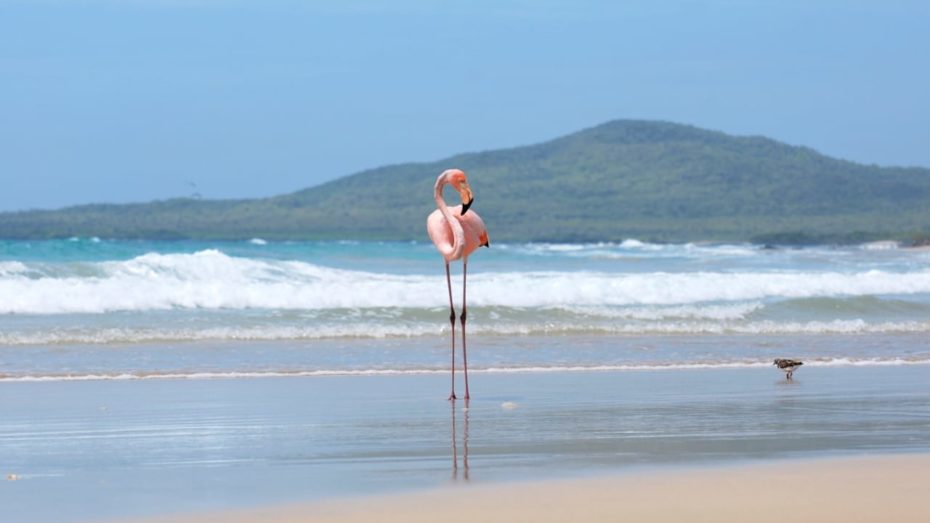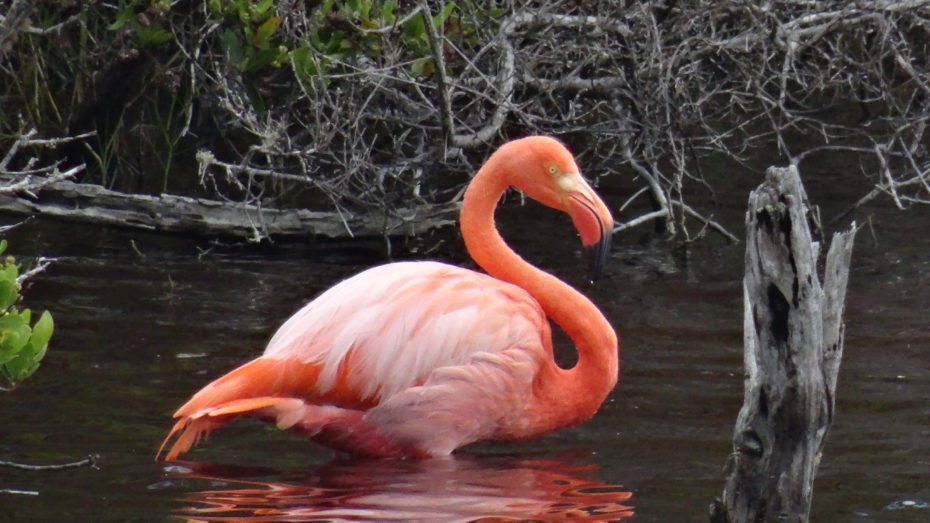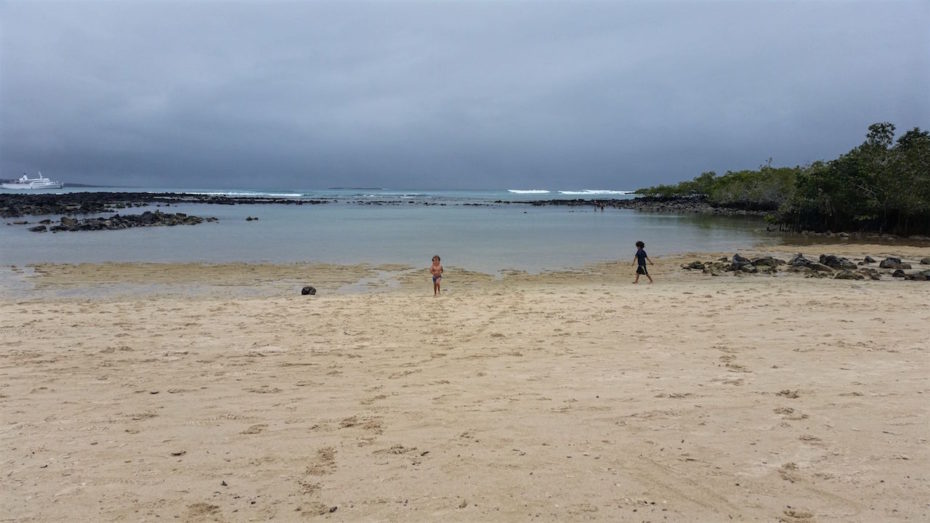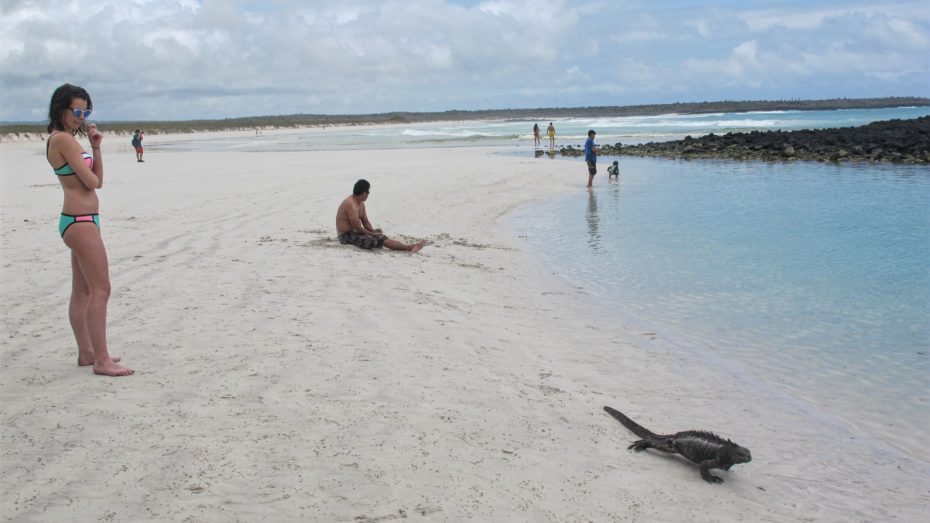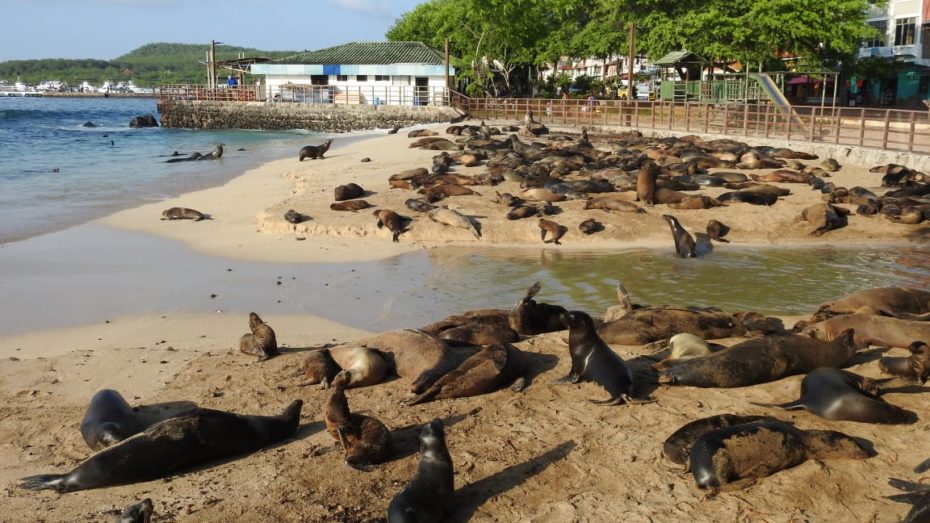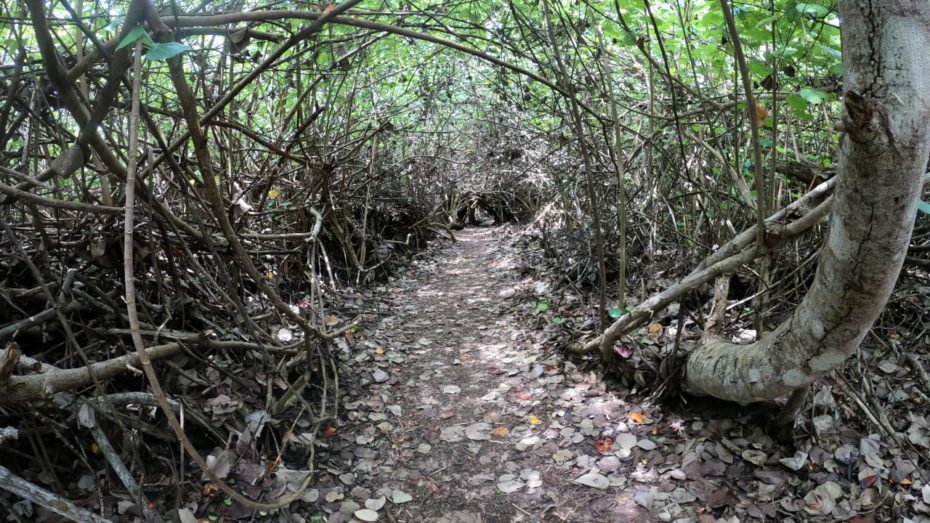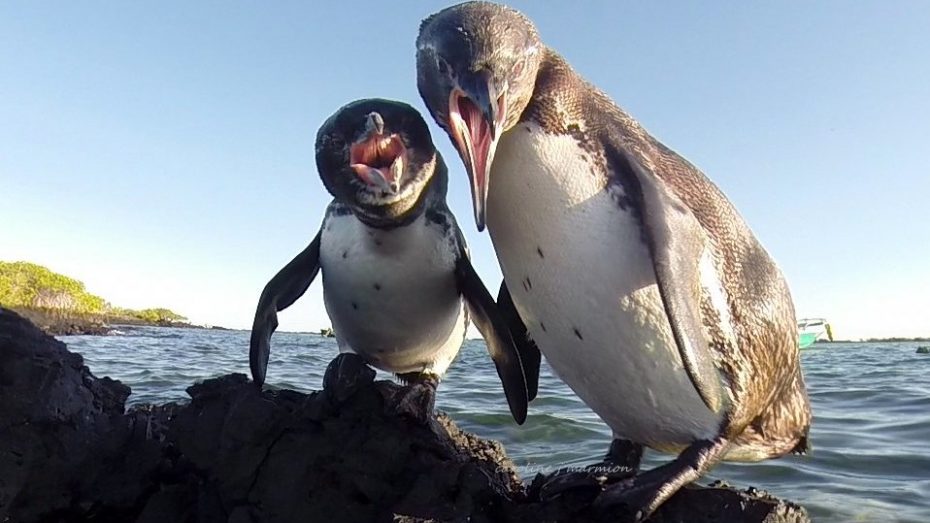Best Places to Explore For Free In, or Near, the Galapagos (Updated, 2022)
Our guide to unique places for you to visit in the Galapagos Islands
Should you choose to have a Galapagos adventure with Academy Bay Diving, you will have time to explore these magnificent islands around your dive trips. Depending on your broader travel arrangements, you may even have free days at your disposal.
Of course, you can take this time to relax on the beach or by the pool with a good book. But if, like us, you prefer to squeeze as much into your travels as possible, here is our selection of excellent free (or almost free) sites you can visit by yourself.
And while you’re here, please check out our selection of Galapagos Diving Packages, general Galapagos Islands Tour Packages, daily Galapagos Land Tours, and our Self-Guided Galapagos Tours.
Isla Santa Cruz
Tortuga Bay
Location: 2 km west of Puerto Ayora via a walking path or a 20-minute boat ride from the main pier.
Open from 6 a.m. to 6 p.m.
This white sandy beach rivals anything found throughout South America. Tortuga Bay is an excellent place to swim, surf, walk, or relax amidst beautiful surroundings. It is called Tortuga Bay because the green sea turtles use it as a nesting site throughout the breeding season.

A lone Pelican taking in the rays on the pristine beach Tortuga Bay
If you roll out of bed early enough, you can see the tracks left overnight by female turtles who cross the beach to lay their eggs in the dunes. As well as the turtles, the bay is home to hundreds, if not thousands, of marine iguanas, which can be seen sunning themselves in groups throughout the day.
Sharks, pelicans, and the occasional flamingo, delight visitors all year round (Visit our Galapagos Wildlife page to learn more about the marvelous creatures of these islands). And if you want somewhere with no waves at all, continue walking around the point where you will find a secluded lagoon perfect for snorkeling.
Please note there is no drinking water or toilet facilities at the beach, so remember to come prepared. Forgotten sunscreen and hats have left many a tourist pink and sore the next day!
Tortuga Bay is also the central surf spot on Isla Santa Cruz. The main break is to the left as you arrive at the beach from the walking path.
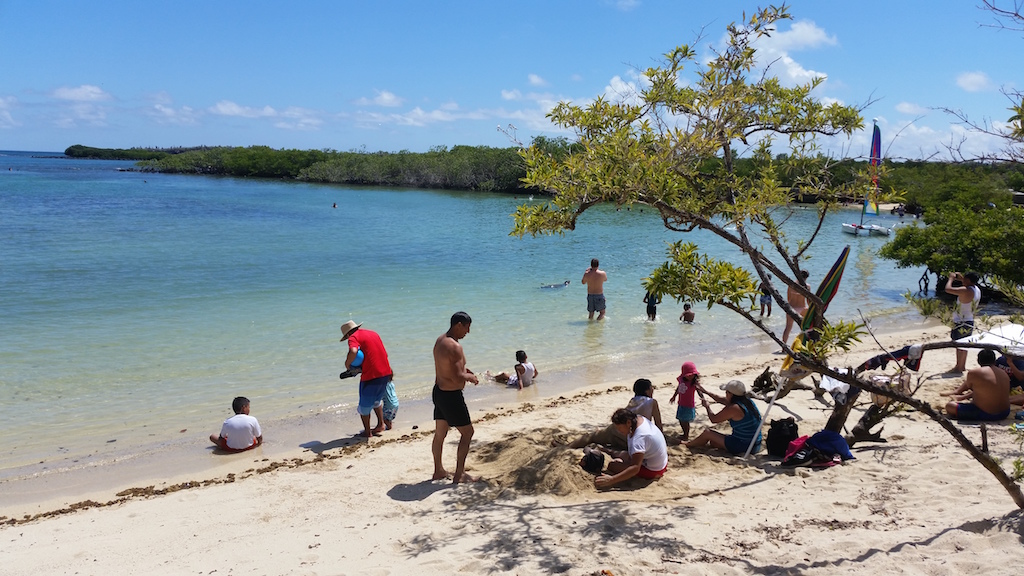
I like visiting German beach at High tide, more water, less rocks!
German Bay
Location: 2-minute water taxi ride across the bay.
I like visiting German Beach at high tide: more water, fewer rocks! This small shallow beach is the closest swimming spot to Puerto Ayora and a nice stop on the way to Las Grietas. You will need to take a short water taxi ride from the main pier, then walk for around five minutes to relax in the warm sand.
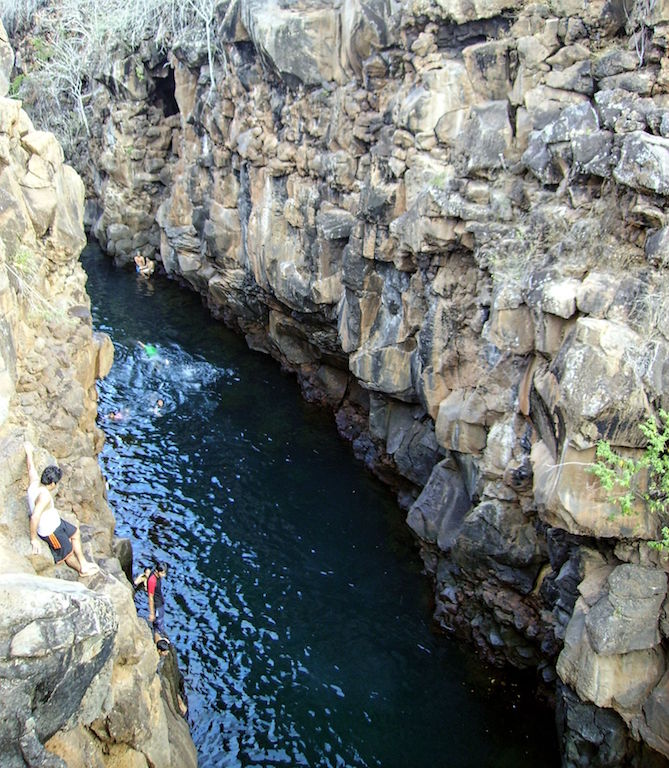
Las Grietas is a great place for swimming close to town
Las Grietas
Location: Take a water taxi from the main pier towards Angermeyer Point for approx. two minutes and then follow the signs along the walking track for approx 20 minutes past German Beach in front of Finch Bay Hotel. Water taxis operate 24/7.
Las Grietas is a large, water-filled crevice in the rocks containing a mix of salt and fresh water. The water is calm, clear, and great for snorkeling to see the large parrotfish that call Las Grietas home. Just be sure to watch your belongings. Thieves are active in this area, and many cameras and cell phones have gone missing.
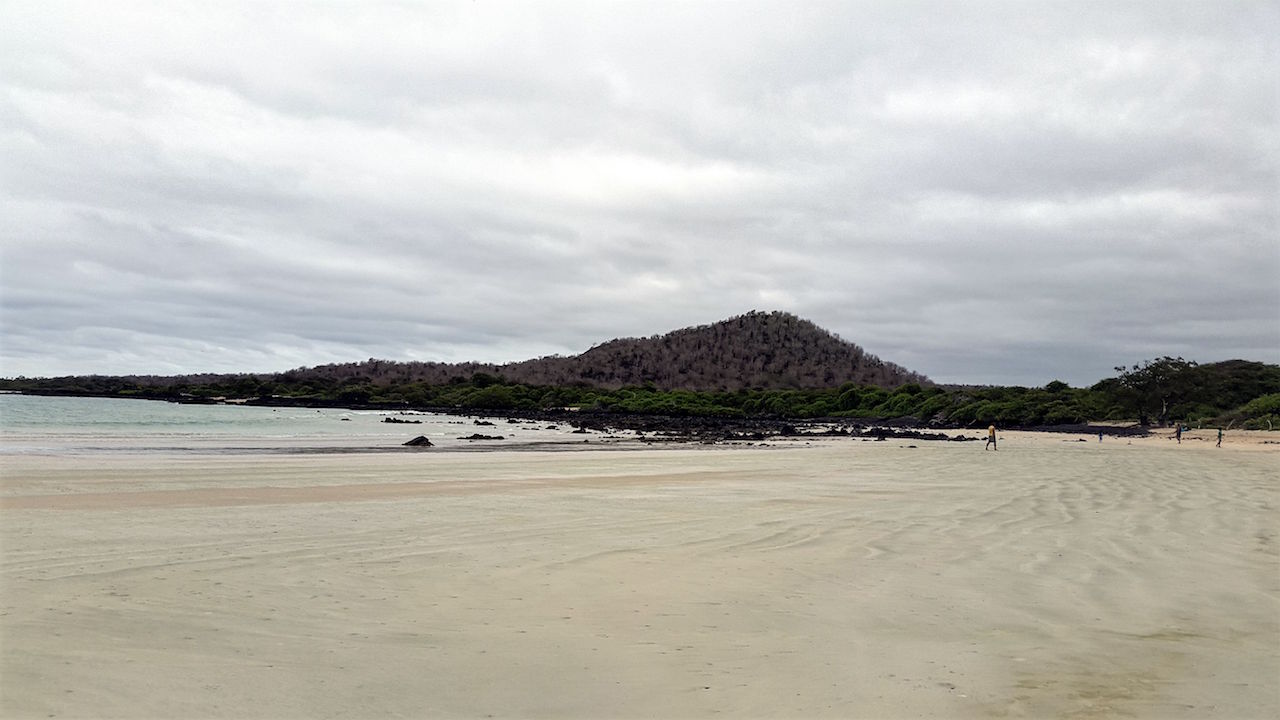
Take a drive across to the east cost of Santa Cruz to Playa Garrapatero. You may even spot a Flamingo
Garrapatero Beach
Location: A 30–40 minute taxi ride east of Puerto Ayora, followed by a 15-minute walk onto the beach.
Garrapatero is a vast bay with multiple sandy beaches and tidal pools, suitable for exploring and snorkeling on calm days. You can also rent kayaks to get out onto the sea for better views.
There is also a freshwater lagoon behind the beach, which is occasionally the home to fabulous pink flamingos!
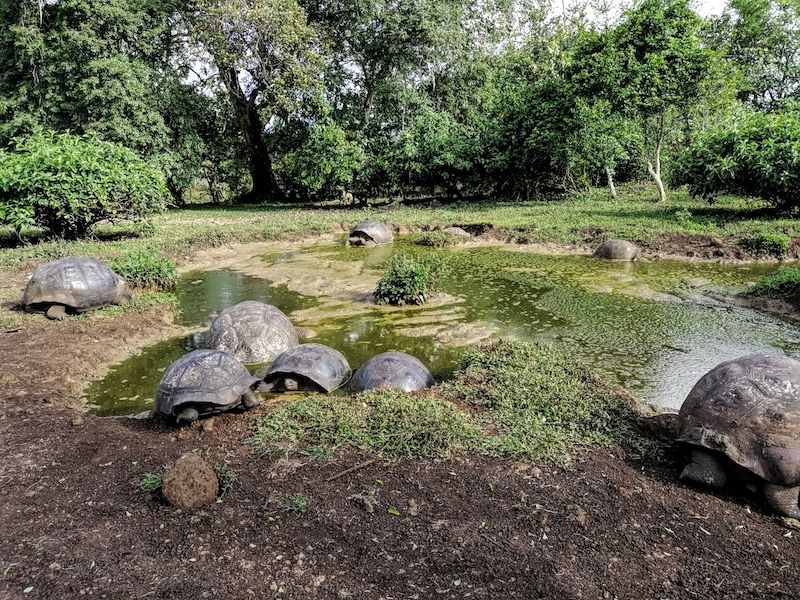
Don’t miss the Giant tortoise reserve in Santa Cruz.
Giant Tortoise Reserves and Lava Tunnels – El Chato, Las Grietas
Location: There are two private giant tortoise reserves in the highlands near the small town of Santa Rosa. You can take a round-trip taxi ride or rent bikes and ride the 22 km up the hill!
These reserves are some of the only places where you can observe these majestic, ancient creatures up close in the wild. They look old and even sound old when they suck in their necks and heads and let out a hiss of air, like an old leather cushion.
The reserve is also great for seeing the short-eared owls, Darwin’s finches, yellow warblers, and paint-billed crakes. You can also visit the lava tubes to walk more than 1 km underground.
They were formed by the solidifying outside skin of a molten lava flow. When the lava flow ceased, the molten lava inside the flow kept moving, emptying of the solidified skin, thus leaving tunnels.
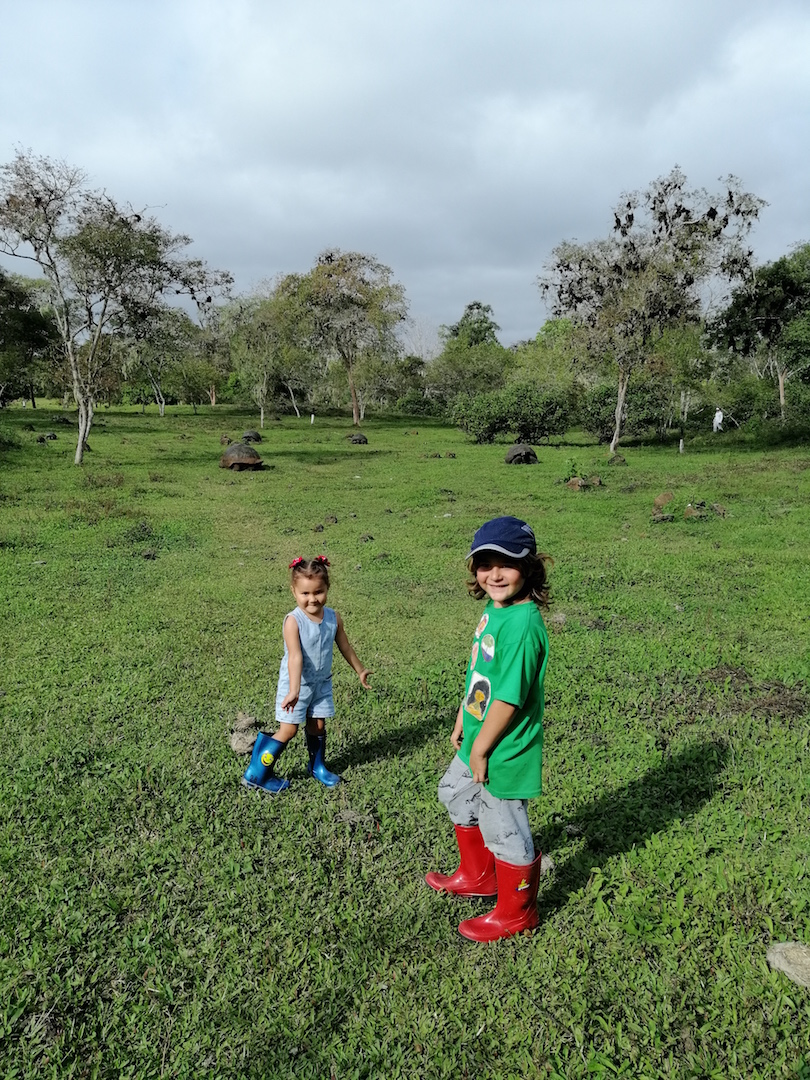
Giant tortoises everywhere
Tunnel of Love – Bellavista
Location: Bellavista, a small town approx. 7 km out of Puerto Ayora. You can go there by taxi or rent a bike and ride up the bike path from Puerto Ayora to Bellavista.
These are the longest Lava tunnels on the island of Santa Cruz. Receive a torch on arrival and explore the 1-km-long Tunnel of Love!
Los Gemelos
Location: You can reach Los Gemelos by a 30-minute taxi drive, or if you feel energetic, you can ride a bike up the hill! The twin craters are sinkholes surrounded by Scalesia forest.
Vermillion flycatchers and often seen here, and short-eared owls on occasion. It is a beautiful place to take in the greenery of the Galapagos. Walk along the small paths around the craters to spot some fabulous birdlife. This site is usually visited in conjunction with the Giant Tortoise Reserve.
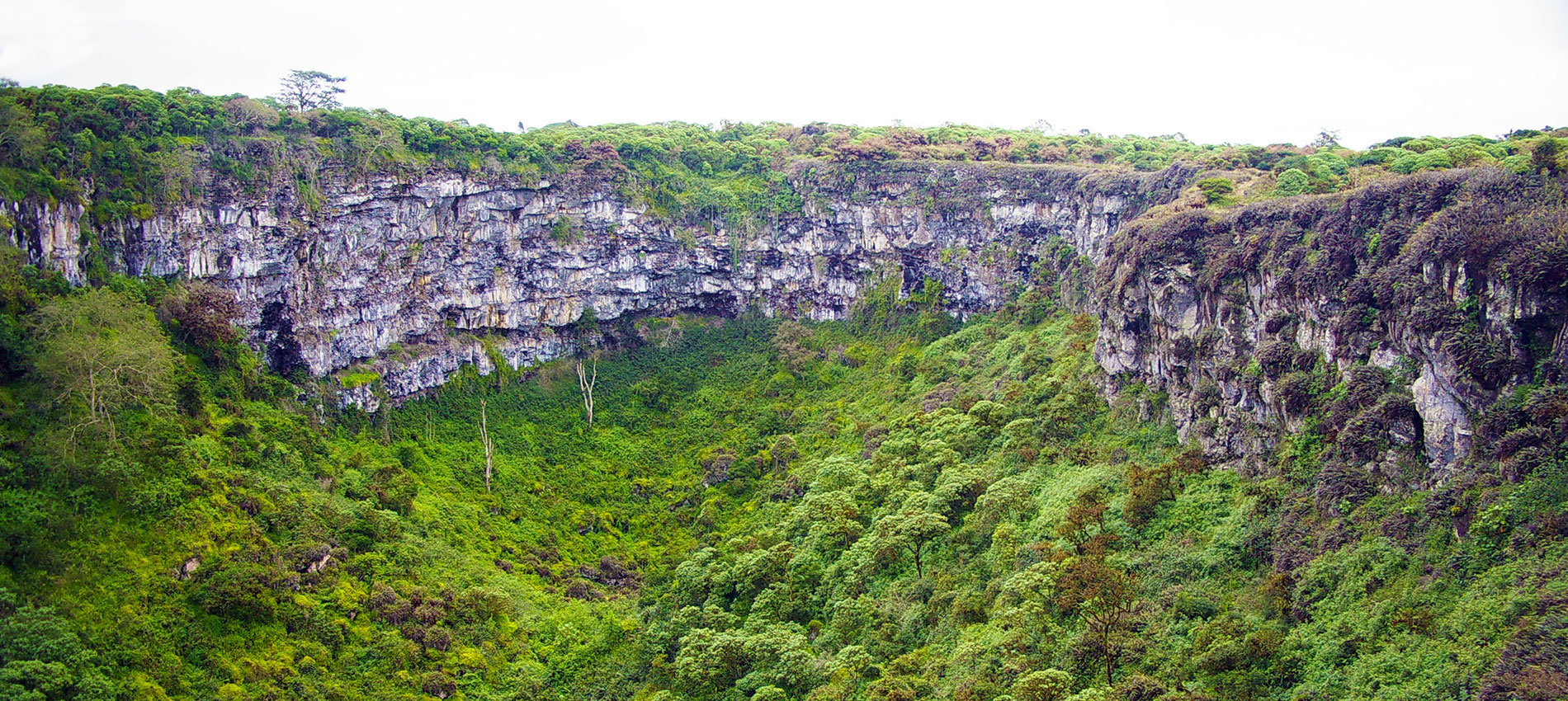
Cerro Crocker and Media Luna
Location: North of Bellavista.
North of Bellavista is the national parkland known as the highlands. A path from Bellavista leads towards Cerro Crocker (864 m), other hills, and extinct volcanoes. The walk is approx. 1.5–2 hours up to the Cerro Crocker lookout.
This is an excellent chance to see the vegetation of the Scalesia, Miconia, and fern sedge zones and to look for birds such as the vermilion flycatcher, the elusive Galàpagos rail, and the paint-billed crake. The area can get very wet and muddy if it rains, so check with the locals before you go and let someone know your plans. You would not be the first person to get lost up there!
Charles Darwin Station
Location: A 20–25 minute walk east down the end of the main drag, Av. Charles Darwin.
Open 6 a.m. – 6 p.m.
More than 200 scientists and volunteers are involved in research and conservation efforts. The most well-known of which involves a captive breeding program for giant tortoises.
It contains a national park information center, a baby tortoise house with incubators, and an adult tortoise enclosure walk.
Other attractions include a small enclosure containing several land iguanas and explanations concerning efforts to restore their populations on islands where they’ve been pushed to the brink of extinction.
You can even visit the preserved remains of the late Lonesome George in his climate-controlled museum area.

Visit the Charles Darwin Station on the Isla Santa Cruz
Station Beach
Location: A 20 – 25 minute walk east down the end of the main drag, Av
Charles Darwin.
Open 6 a.m. – 6 p.m.
This beach is small but perfect on a hot day. It is on the way into the Charles Darwin Research Station and is excellent on low or high tide. Many locals swim laps here when the water is calm and the mornings are hot.
It’s a great place to see marine iguanas swimming in the water during the hottest times of the day.
Stop for a refreshing swim at the station beach on your way out of the Charles Darwin Research Station.
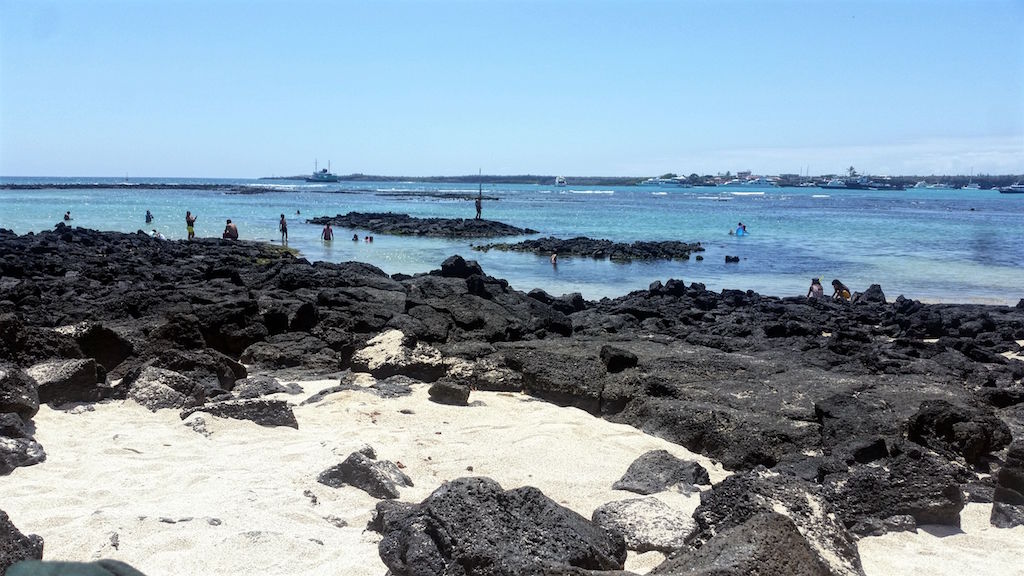
On your way out of the Charles Darwin station stop for a refreshing swim at the station beach
Isla Isabela
Academy Bay Diving offers Isabela Island Tours as part of our wider Galapagos Land Tours. Our guided experiences are the perfect way to discover the largest island in the archipelago.
The Main Beach
The town of Isabela is located just across the road from a long, white, deserted beach. Just take your towel, a good book, and some sunscreen. A short walk up the beach, and you will be alone in your Galapagos paradise.
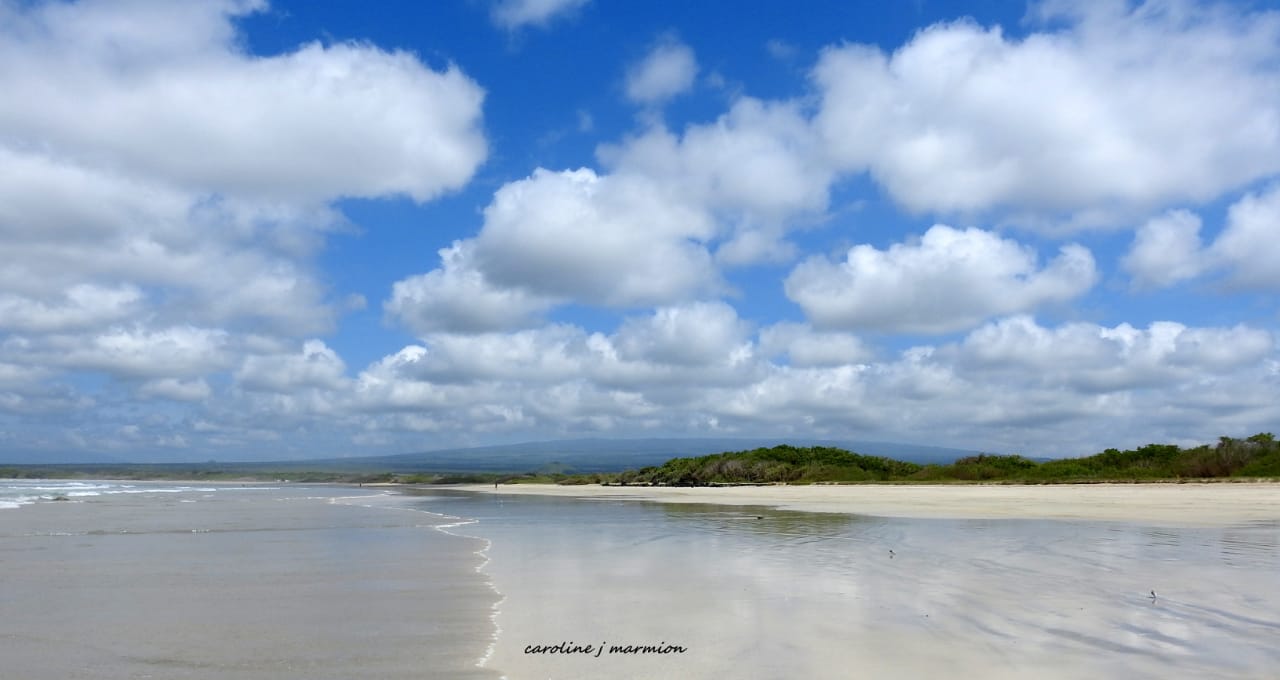
Photo taken by Caroline Marmion. Isabela main beach
Flamingo Lagoon and Giant Tortoise Breeding Center (Wetlands)
This site is known for its marine iguanas and migrant birds, and most famously, the flamingos. A little over a kilometer-long trail begins as a wooden boardwalk over the lagoons and passes through mangroves and dense vegetation, ending in the Crianza de Tortugas (the giant tortoise breeding center).
Sometimes you can see two flamingos, sometimes 20. Cross your fingers for some good luck!

Photo taken by Caroline Marmion
Concha de Perla
Concha de Perla is located just near the main pier in Puerto Villamil, about 15 minutes walk from the town. It is a naturally formed lagoon frequented by sea lions, marine iguanas, eagle rays, and if you are fortunate, the Galapagos penguins.
Get up early and take a dip in the crystal clear waters early in the morning to beat the crowds.
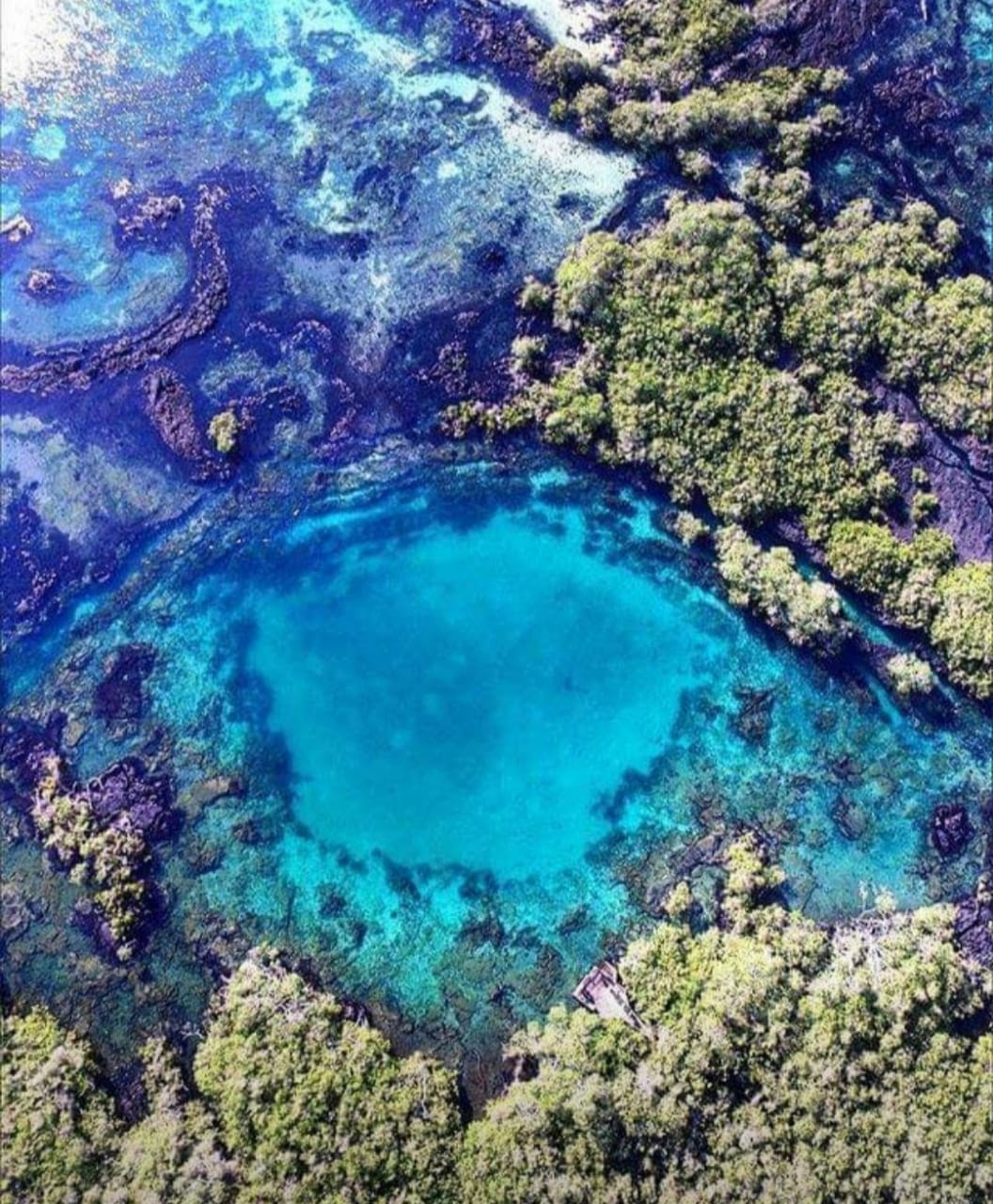
Concha de Perla is a natural made lagoon great for swimming and snorkelling.
Wall of Tears
From 1945-1959, a penal colony hosted prisoners forced to build this wall, stone by stone, in isolation. This is now a historical site (El Muro de las Lágrimas), towering at 65 feet (25m) high, which took thousands of lives during its construction.
Locals claim to hear cries emanating from the heavy energy surrounding the site.
It is about a two-hour walk out of town or about one hour by bike. You can rent a bike from many agencies in town. Along the track, you may run into the local giant tortoises.
Don’t miss the small paths that run off to the beach, where you will be alone with the iguanas or up to spectacular lookouts over Puerto Rico Villamil.
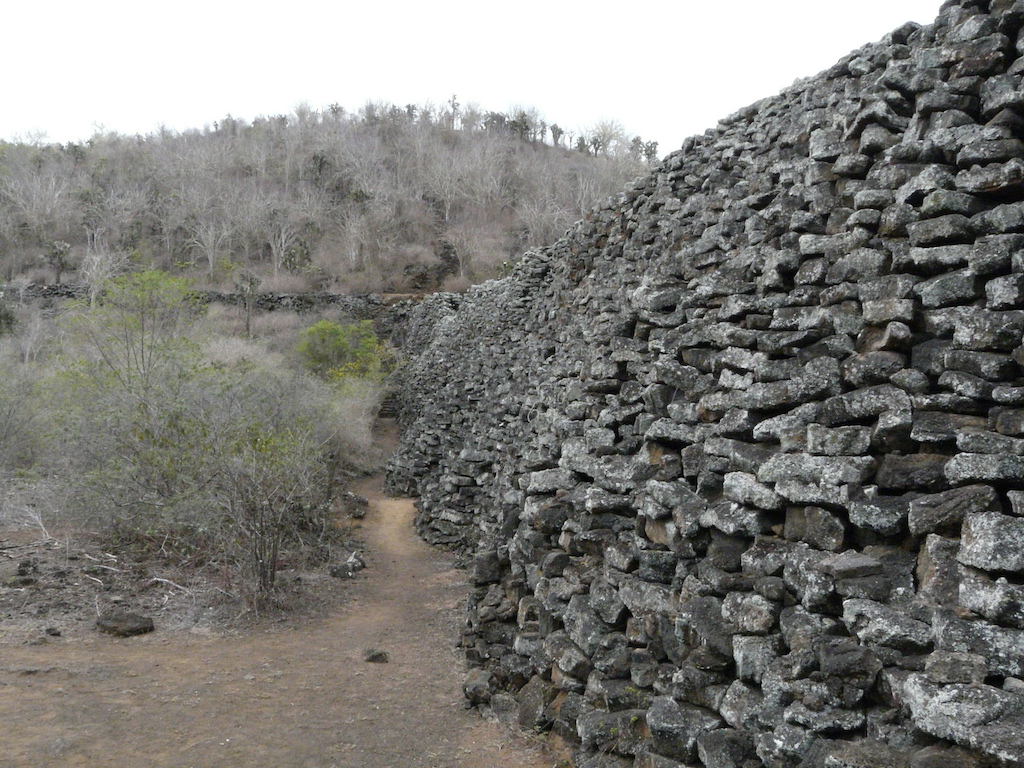
The historical site The wall of tears in Isla Isabela
El Estero
El Estero is a beautiful secluded beach surrounded by an endemic mangrove forest. You can find the sign for the entrance along the path near the Wall of Tears.
It is the perfect place to cool off after a walk or bike ride to the historical site. Don’t forget to keep your distance from the local sea lions!
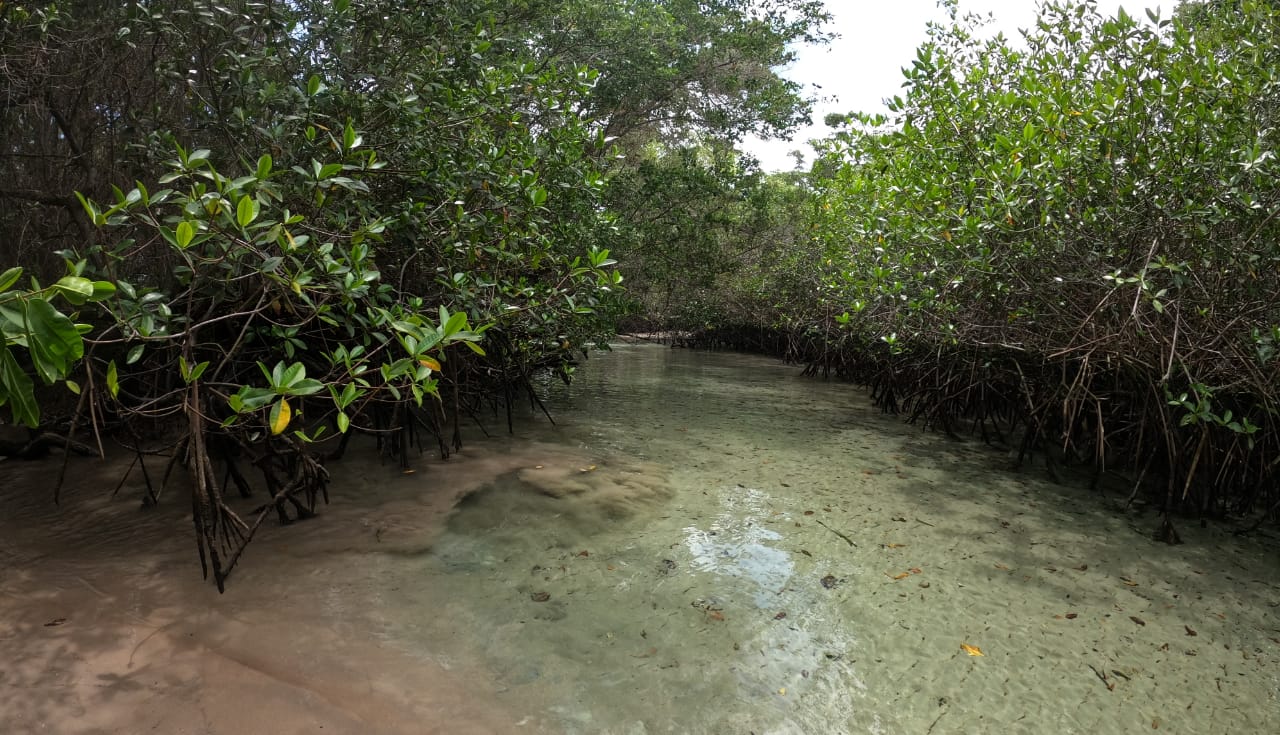
Photo taken by Caroline Marmion
La Playita
La Playita is also located on the path to the Wall of Tears. With the beautiful beaches and lookouts along the way, it’s better to make at least half a day excursion to make sure you make the most of these fantastic sites!
Playa del Amor
Playa del Amora is another secluded beach along the Wall of Tear’s path. It is a bit rockier and has a crystal clear tide pool with many fish. It’s an excellent spot for the kids to swim, also.
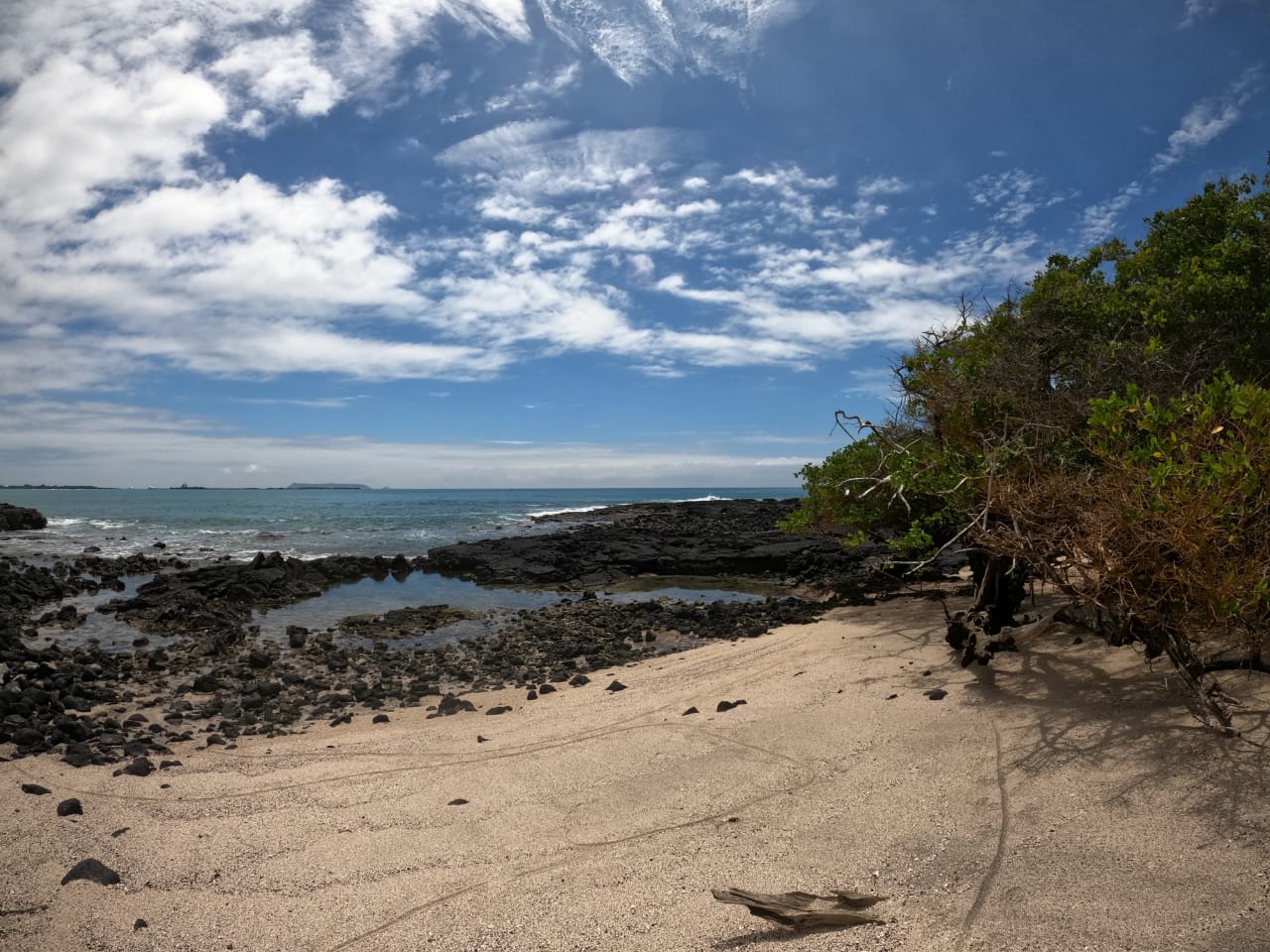
Photo taken by Caroline Marmion
Isla San Cristobal
La Loberia
Location: Approx 2.8 km from the main pier – you can walk (30 minutes) or take a short taxi ride.
The beach is named after the many Lobos Marinos (sea lions) you will find there. Take your mask and snorkel, and don’t be afraid to jump in the water. You will most likely see some turtles, also.
Just remember, if you see a large male, noticeable by the bump on his head, stay clear. They are very territorial, and you don’t want to get too close to their large teeth.
If you walk to the end of the beach and follow the marked trail, you will reach the top of a small cliff where you can spot some of the local seabirds.
You might need shoes for this section over the rough lava rock.
Experienced surfers can also enjoy the break behind the bay. Due to the rocks and the giant waves, it’s not a suitable spot for beginners.
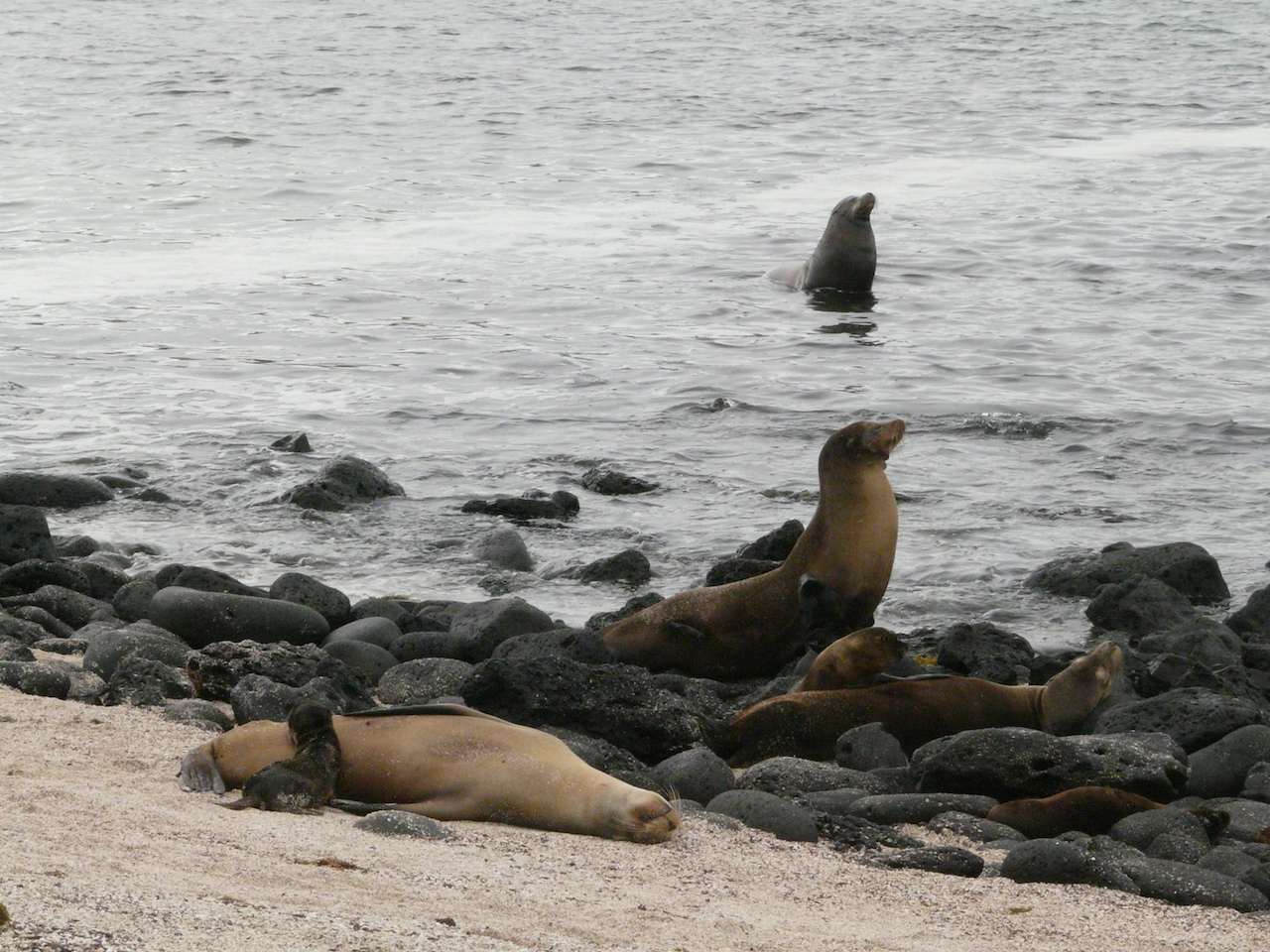
Come and visit the sea lions in Isla San Cristobal – La Loberia
Interpretation Center
Location: Approx 1.5 km/15-minute walk from the town center towards Playa Mann.
The interpretation center is one of, if not the best, places in the Galapagos to read about the islands’ biology, geology, and human history. It is also the starting point for the Las Tijeretas lookout and lagoon walking path.
Las Tijeretas – Tijeretas Lookout
Location: Approx 2.5 km/40-minute walk from the town center
You will probably need at least half a day for this trip if you want to take your time and make the most of the swimming spots and beaches along the way. A circular path begins at the Interpretation Center. It continues to the Tijeretas lookout.
With its crystal clear waters, the naturally made lagoon finishes coming out onto the beach at Punta Carola.
From the lookout, you get a stunning view of Kicker Rock, and as it’s a nesting site for the Frigate birds, you might be able to see them puffing their red chests out in their mating ritual.
The Lagoon below is a beautiful place to snorkel on a hot day. It is frequented by green sea turtles, Galapagos sea lions, and many colorful reef fish.
Playa Mann and Punta Carola
Location: Approx 2 km from the main pier – you can talk or take a taxi to the entrance near Playa Mann, then walk into Punta Carola – about 7 minutes.
Walking from town, you will arrive at Playa Mann first. It is just past the most prominent hotel/resort on the islands. You can sunbathe with the sea lions, then follow them into the water to cool off.
Punta Carola is a little further down the road and is one of the better surf beaches in San Cristobal.
When it’s calm, it’s also a great place to snorkel with sea lions, turtles, and sometimes marine iguanas. Halfway along the beach is the track that goes up to the right to Las Tijeretas.
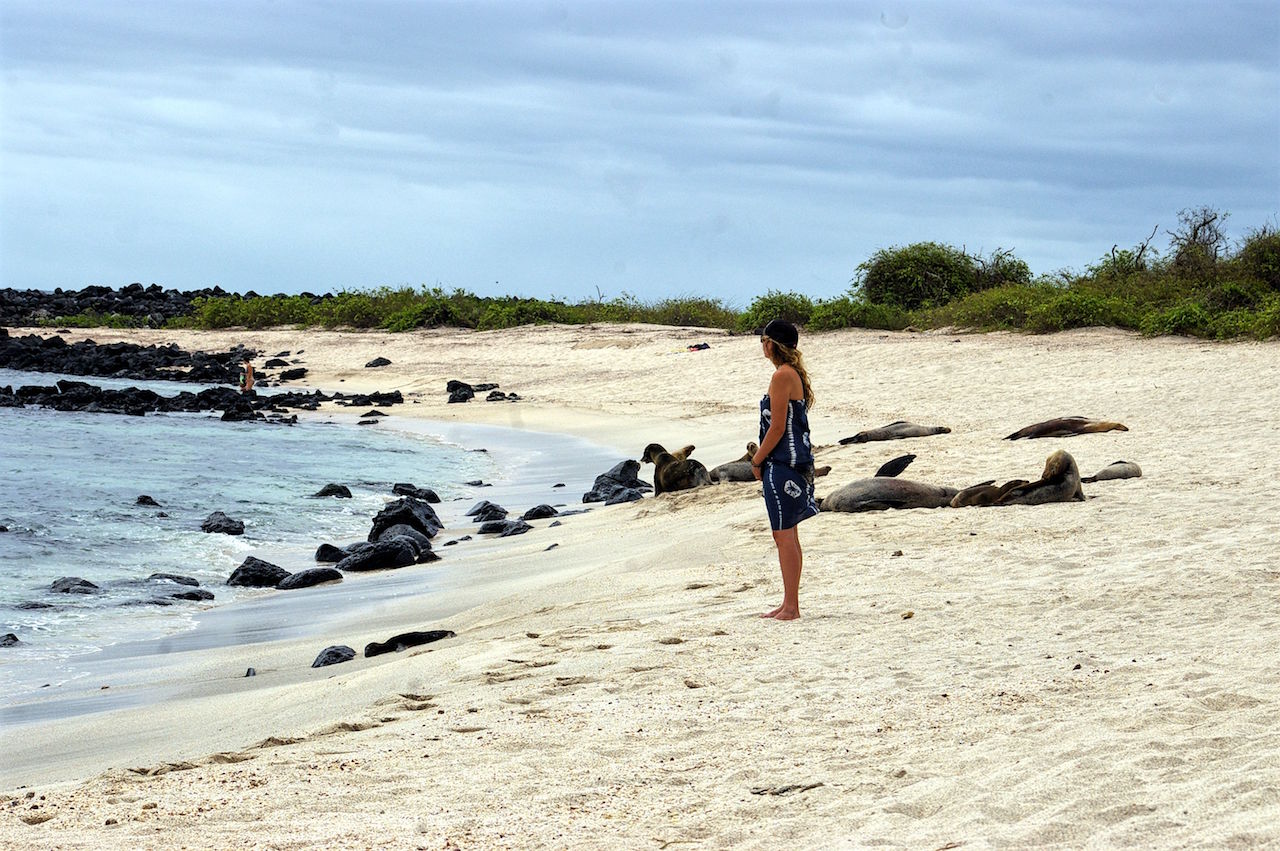
Sea lions everywhere at Punta Carola
Puerto Chino
Location: Take a taxi up and over the highlands to Puerto Chino. The beach visit is often combined with the Highlands, the Galapaguera Tortoise Reserve, and El Junco Crater Lake. You can ride a bike, but it’s uphill there and back!
Puerto Chino is easily one of the most beautiful beaches in the Galapagos. With its fine white sand, blue waters, and contrasting black lava rocks, it’s a great spot to take in the sites and swim.
To the right of the beach, there is a short trail that leads around the headland, where you can sometimes spot some blue-footed boobies nesting or diving into the water to collect their next feed.
It is a popular spot with the locals on the weekends, so a weekday visit is best to beat the crowds.
There are no services or shops on the beach, so take drinking water, a hat, sunscreen, and snacks. You will need to organize how long you want your taxi driver to wait or when they will come back and pick you up.
Highlands (La Galapaguera and El Junco)
Location: The Highlands of San Cristobal – taxi ride approx. 20 minutes up the hill.
El Junco is the most significant natural freshwater source on the islands.
You will need to walk about 10 minutes up a not-too-steep incline from the parking to reach the lake.
On a clear day, you will have a breathtaking 360-degree view of San Cristobal Island, but take the 2km walking trail around the lake to make the most of the views. You can frequently see the frigate birds and other sea birds swooping around the freshwater.
Remember, if it rains, the area will be a little muddy!
The Galapaguera de Cerro Colorado is the tortoise breeding center on Isla San Cristobal. A trail will take you past the breeding center, where all the younger tortoises are housed until they are large enough to fend for themselves.
Further down the track, you will meet the larger adults who roam freely around the reserve.
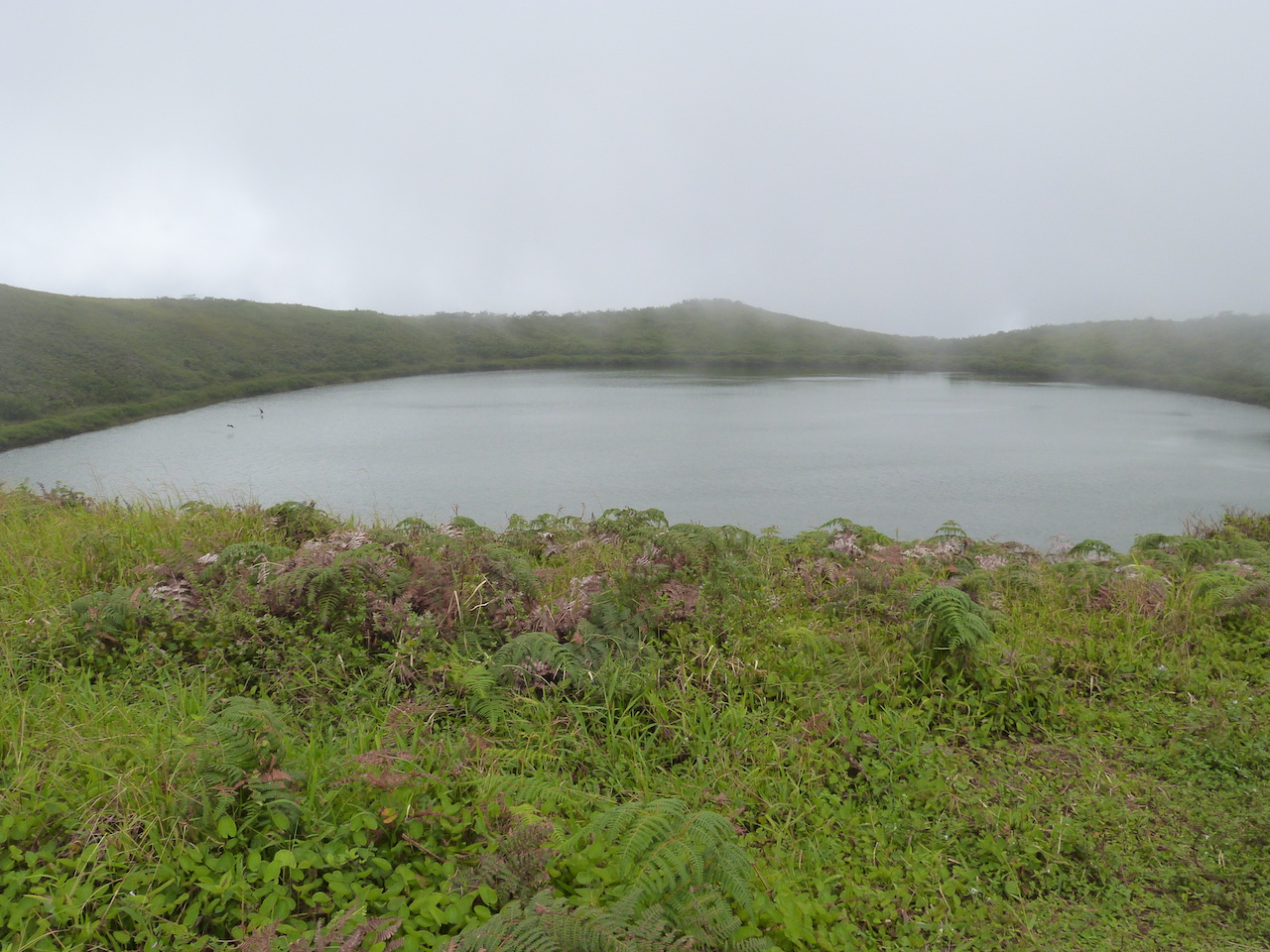
Once of the stops on the San Cristobal Highlands tour. The only fresh water lake on the islands.
Playa de Oro – Golden Beach
Location: In the town near the main pier. To the left, if you are facing the water.
Here on the beach, you can sometimes see hundreds of Galapagos sea lions, though you will most surely smell them before you set eyes on them!
Make sure you go past there at night when they all come in to get a restful night’s sleep on the beach!
WHEN VISITING THESE SITES, PLEASE REMEMBER THE NATIONAL PARK RULES
- Keep a distance of 2 meters from wildlife, including your camera
- Do not touch or feed the fauna
- Do not remove elements of the ecosystem
- Do not smoke, drink or make campfires in the national park
- Walk on marked trails
- Camp in designated areas with prior authorization
- Use authorized tour and fishing boats
- No flash, professional photographers and drones need special permission
- Do not introduce external elements into the ecosystem
- Do not use motorized watercraft, submarines, and air tourism
If you have any questions about Galapagos Diving Packages, general Galapagos Islands Packages, daily Galapagos Land Tours, or any of our other excursions, please don’t hesitate to get in touch with us.







